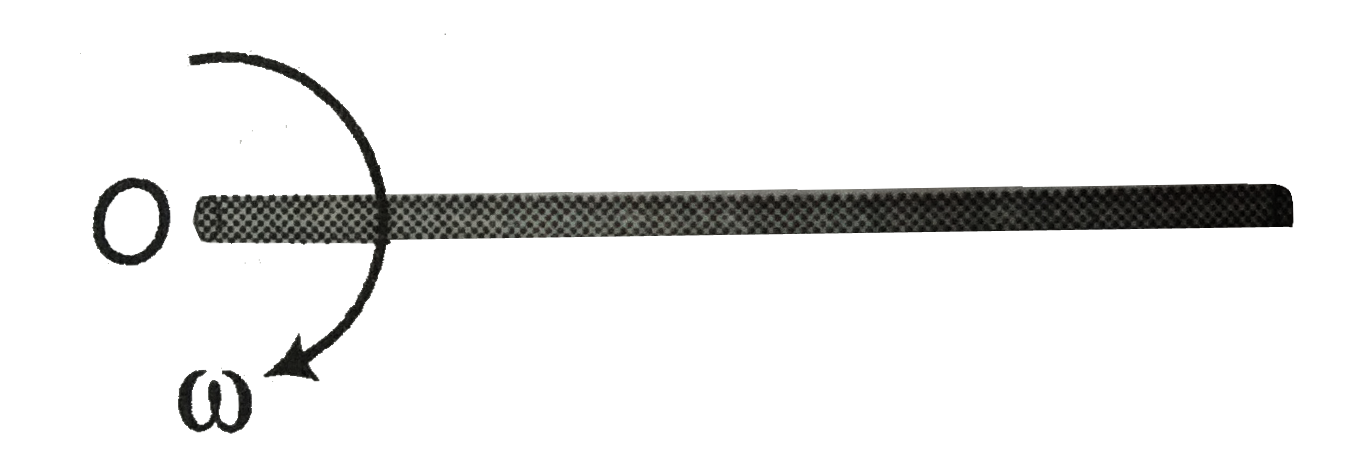A coll of radius r=25cm wound of a thin a copper wire of length l=500m rotates with an angular velocity ω=300rad/s about its axis. The coll is connected toa baliistic galvanometer by means of sliding contacts. The total resistanace of the circuit is equal t R=21Ω. Find teh specific total resistance of the circuit is equal to R=21Ω. Find the specfiic charge of current carries in copper if a sudden stoppage of the coil makes a charge q=10nC flow through the galvanometer.
In a rotating route, to first order in ω, the main effect is a colotis froce 2m→v×→ω. This unbalanced froce will cause electrons to react by setting up a magnetic field →B so that the magnitude force e→v×→B balances the coritolis force.
Thus −ε2m→B−→ω or, →B=−2mε→ω
The flux assocatied with this is
Φ=Nπr2B=Nπr22meω
where N=l2πr is the number of thrus of the ring. If ω changes (and then is time for electron to rearrange) then B also charges and so does Φ. An emf will be induced and a current will flow. This is
I=Nπr22meΦ/R
The total charge flowing through the ballastic galvanometer as the ring is stopped, is
q=Nπr2/2meω/R
So, em=2Nπr2ωqR=lωrqR
Topper's Solved these Questions
- ELECTRODYNAMICSBOOK - IE IRODOV, LA SENA & SS KROTOVCHAPTER - ELECTRODYNAMICSEXERCISE - Constant Magnetic Fiels - Magnetics
69 Videos
- ELECTRODYNAMICSBOOK - IE IRODOV, LA SENA & SS KROTOVCHAPTER - ELECTRODYNAMICSEXERCISE - Electromagnetic Induction
84 Videos
- ELECTRODYNAMICSBOOK - IE IRODOV, LA SENA & SS KROTOVCHAPTER - ELECTRODYNAMICSEXERCISE - Electric Capacitance - Energy Of An Electric Field
46 Videos
- ELECTRICITY AND MAGNETISMBOOK - IE IRODOV, LA SENA & SS KROTOVCHAPTER - ELECTRICITY AND MAGNETISMEXERCISE - All Questions
6 Videos
- ELECTROMAGNETISMBOOK - IE IRODOV, LA SENA & SS KROTOVCHAPTER - ELECTROMAGNETISMEXERCISE - All Questions
24 Videos
Similar Questions
A copper ball of mass m=1kg with a radius of r=10cm rotates with angular velocity ω=2rad/s about an axis passing through its centre. The work should be performed to increase the angular velocity of rotation of the ball two fold is.
View SolutionA coil of radius r=25cm is made of a thin copper wire of length l=500m and resistance R rotates with an angular velocity ω=500m and resistance R rotates with an angular velocity ω=300rad/sec about its axis. Calculate the quantities of charges in the coil that will flow duie to the sudden stoppage of the coil
"["Hint: Loss in KE= Heat produced"]"
View Solution
Knowledge Check
A particle 'A' moves along a circle of radius R = 50 cm, so that its radius vetor 'r' relative to the point O rotates with the constant angular velocity ω=0.4rad/s. Then :
Alinear velocity of particle is 0.2m/sBlinear velocity of particle is 0.4m/sCmagnitude of net acceleration is 0.08m/s2Dacceleration of particle is zeroA copper ball of mass m=1kg with a radius of r=10cm rotates with angular velocity ω=2rad/s about an axis passing through its centre. The work should be performed to increase the angular velocity of rotation of the ball two fold is.
A1.2×10−2JB2.4×10−2JC3.6×10−2JD4.8×10−2JA thin uniform copper rod of length l and cross-section area A and mass m rotates uniformly with an angular velocity ω in a horizontal plane about a vertical axis passing through one of its ends. The elongation of the rod will be
Amω2l26AYBmω2l23AYCmω2l2AYDmω2l22AY

A rod of mass 2 kg ad length 2 m is rotating about its one end O with an angular velocity ω=4rad/s. Find angular momentum of the rod about the axis rotation.
View SolutionA solid sphere of radius r and mass m rotates about an axis passing through its centre with angular velocity ω. Its K.E. Is
View SolutionA solid sphere of radius r and mass m rotates about an axis passing through its centre with angular velocity ω. Its K.E. Is
View SolutionA thin uniform copper rod of length l and mass m rotates uniformly with an angular velocity ω in a horizontal plane about a vertical axis passing through one of its ends. Determine the tension in the rod as a function of the distance r from the rotation axis. Find the elongation of the rod.
View SolutionA thin uniform copper rod of length l and mass m rotates uniformly with an angular velocity ω in a horizontal plane about a vertical axis passing through one of its ends. Determine the tension in the rod as a function of the distance r from the rotation axis. Find the elongation of the rod.
View Solution
